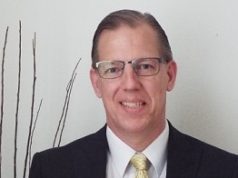Recently, “Colorado Company” magazine highlighted a developer who believes in nothing but “green” building. It was a wonderful article, but it gets at an underlying question: Why is this still a story?
The idea of green building has not spread like wildfire. The mass-market building sector is oblivious. Most of the structures in trade magazines like “Architectural Digest” aren’t green. Two months ago, “The New York Times” ran an article in which Robert A.M. Stern, dean of Yale’s architecture school, said, “I think the trouble with environmentalism is that at most architecture schools it’s been confined to a dreary backwater of mechanical engineering.” That is changing, the article reports, but not fast enough.
Meanwhile, even good green builders often come up short. In the environmental building community here in Colorado, everyone’s got a story of a disastrous effort: one that uses 10 times as much energy as it was supposed to; a micro-turbine that wasn’t so cost-effective after gas prices spiked; a south-facing community college that needed its air-conditioning retrofit in the winter.
Green building was supposed to be the road to the Promised Land, where good design meshed with stewardship for the benefit of all, while the bottom line remained intact. But if Moses were an architect, he would have come back from the mountain with 10 tablets of screwups and cover-ups.
So why is it so hard to build green? One response, of course, is that it isn’t. In fact, there’s a strong case to be made for a booming movement. Membership in the U.S. Green Building Council has grown to 6,000 since its founding in 1993. States and cities like Wisconsin, Seattle, and Portland, Ore., are adopting green building standards. There is reasonably strong federal action on the issue, if not at the level of the White House. And corporate leadership in the arena is expanding.
This all sounds good, until you look around. Try to buy a green home in any major subdivision in America, for instance—it’s as rare as a flower in the desert. Some of the reasons for the slow pace of the movement’s growth are obvious: cost; cultural and structural resistance; lack of talent or expertise; lack of research, funding, and awareness; and perceived trade-offs between quality or security and sustainability. But there are two less obvious reasons to consider.
The first is that stakeholders are afraid to challenge the myth that green building is cheap and easy. Once you’ve gone through the process, you’re scared to point out the warts, because your work is now a model, getting enormous publicity. But ultimately, the lack of willingness to admit failure prevents the industry from learning from its mistakes. Until that changes—until there are conferences about mistakes and pitfalls, not brilliant successes—the learning curve will remain flat.
As renowned green architect William McDonough said after “Environmental Building News” reported on problems with the environmental studies center he designed for Oberlin College, these are new projects. The point isn’t that they work perfectly at first, it’s that they eventually work well. And, I would add, that we learn as we go.
The second reason green building hasn’t become more mainstream is that it’s often discussed in a secret language—the code of a cabal. For instance, talk of “biomimicry”—the idea that buildings should be modeled on natural systems—is nearly inescapable. But as Michael Brown, an environmental consultant and editor at the “Journal of Industrial Ecology” points out, biomimicry seems mainly to be about making something straightforward (avoid toxics, strive for closed loops, minimize energy) into something that requires a consultant.
LEED, the U.S. Green Building Council’s certification system, has its own cabal-like nature too. The message is, you have to know LEED if you want to build green. But LEED is not how you get a green building—it’s how you certify one. It is not a blueprint. If it’s treated as one, then certification concerns begin to trump performance, and drive the process.
Here in Aspen, we’’re proposing new affordable housing that will run on lake-source heat pumps and use structural insulated panels. It would be very hard for this building not to beat energy code by 40 percent. We’ll need things like passive solar orientation; envelope efficiency, including super insulation and tightness; and an efficient and right-sized heating system. What we won’t need is a consultant, a biologist, a Ph.D., or a translator.
Successful green buildings depend on talent and freedom: qualified engineers, architects, builders, and owners, preferably with some green experience, who are willing to take risks and try new things. The Eastgate Building in Zimbabwe, which self-shades and dumps heat at night, isn’t successful because it looks like a cactus (though that doesn’t hurt). It’s successful because architect Mick Pearce is a genius, and someone gave him free reign, along with the help of a great engineering firm, Ove Arup.
But talent and freedom are in short supply. And that inevitably results in something that looks less like green building than business as usual, with a green consultant thrown in. On typical projects, the consultant—to whom well-intentioned owners ascribe God-like qualities—is charged with jury-rigging an already doomed process. By, for example, helping to document that a building’s steel studs and rebar, which would have been used even in a “brown” project, are partly recycled, and contribute to making the building bona fide green. (This is something I’ve been guilty of when using LEED.) These kinds of decisions, in turn, lead to mediocre final results that are hailed as “successful blueprints” for the future, and whose mistakes are never analyzed.
Change takes time, of course. But we don’t have time. Buildings are a major contributor to atmospheric carbon dioxide levels, and we have to cut those soon just to stabilize them at twice pre-industrial levels. As NASA scientist James Hansen has said, unless we move aggressively to reduce emissions in the next decade, future generations will face life on a planet unrecognizable to us.
So it’s well past time to think about how to speed up the adoption of green practices, and how to break down the barriers to a widespread green construction industry. We can’t afford anything less.
Auden Schendler is director of Environmental Affairs at Aspen Skiing Company, Aspen, Colo., where he is responsible for reducing the resort’s environmental impact. He can be reached at aschendler@aspensnowmass.com.
This column first appeared on Grist.org on June 8, 2006.







